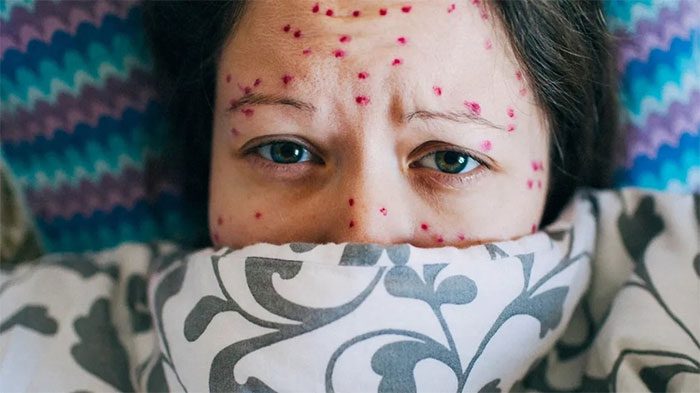Chickenpox and shingles are caused by the same type of varicella-zoster virus, but they are not the same.
Shingles (also known as herpes zoster) and chickenpox are both strains of the same virus, varicella-zoster (VZV). Chickenpox is the precursor to shingles. This infectious rash occurs primarily in younger individuals. As you age, you are more susceptible to shingles outbreaks. This outbreak is due to the reactivation of the previously dormant chickenpox virus.

Chickenpox and shingles both present with rash symptoms on the body. (Image: Healthline).
Differences Between Chickenpox and Shingles
According to Healthline, shingles and chickenpox are both caused by VZV, but they are not the same illness. Chickenpox tends to be more common in children and spreads very quickly among groups. Nevertheless, it remains a serious risk for adults. In contrast, shingles, also known as herpes zoster, primarily affects older adults and is rare in children.
Additionally, there are several differences between the two diseases, including:
Symptoms
Both diseases share similar symptoms, although the severity may differ. They both cause rashes, itching discomfort, and may be accompanied by flu-like symptoms, including: fever, headache, loss of appetite, and nausea.
Before shingles appear, you typically develop symptoms of pain in the body, itching and/or tingling, fever, and headache. The shingles rash usually begins as a single band of rash around one side of the body. Eventually, it may spread to neighboring areas if you scratch it.
According to the American Society for Infection Control and Epidemiology, the rash from chickenpox appears all over the body. The blisters from chickenpox will typically clear up within a week. The pain and rash associated with shingles take longer to resolve, usually lasting from 3 to 5 weeks.

Chickenpox is more common in children, while shingles is typically seen in older adults. (Image: Verywellhealth).
Causes
Chickenpox occurs when a person comes into contact with the VZV virus. Exposure happens when spending time with an infected person or touching their blisters or wounds.
On the other hand, shingles develops when there has been prior exposure to the VZV virus that reactivates in the body. This reactivation usually occurs when the immune system is weakened (due to aging, other illnesses, or medications).
Transmission Process
Chickenpox is a highly contagious disease that can spread to about 90% of unvaccinated individuals in a household that comes into contact with an infected person. Chickenpox spreads through:
- Direct contact with the blisters, saliva, or mucus of an infected person.
- The air through coughing and sneezing.
- Indirect transmission by touching recently contaminated items such as clothing or bed linens.
A person with shingles can transmit VZV to someone who has never had chickenpox before. This transmission can occur through direct contact with the shingles blisters. A person with shingles is no longer contagious once the blisters have crusted over.
Complications
According to Medical News Today, shingles can cause pain and complications, such as vision loss. However, it rarely poses a life-threatening risk. In contrast, chickenpox can be more severe and potentially life-threatening.
Some serious complications of chickenpox include: pneumonia, bacterial infections, encephalitis, cerebral hemorrhage, bleeding problems, dehydration, sepsis, and death. However, the Centers for Disease Control and Prevention (CDC) states that healthy individuals have a lower risk of developing complications from chickenpox.
Can Someone Who Has Never Had Chickenpox Get Shingles?
Shingles is a reactivation of the same virus that caused chickenpox. Therefore, you must have been previously exposed to VZV to develop shingles. A person with shingles can transmit VZV, which can cause chickenpox in someone who has never had chickenpox or has not been vaccinated against it.
According to Jeffrey Brown, a family medicine physician at Cleveland Clinic, both shingles and chickenpox are caused by the same virus (varicella-zoster). Typically, when you are young and have chickenpox, your body fights off this virus but does not eliminate it.
The virus remains dormant somewhere in the nerve roots of the body for many years. Then, at some point as you age, around 50 or even over 60, the virus decides to “wake up” and cause illness again. The pain and rash begin anew, but this time it is shingles.
So, if you have never had chickenpox and a friend has shingles, they have a rash and blisters. When you touch the blisters, you could contract the virus and develop chickenpox. If you have been vaccinated against chickenpox, you are also protected from shingles in adulthood.


















































